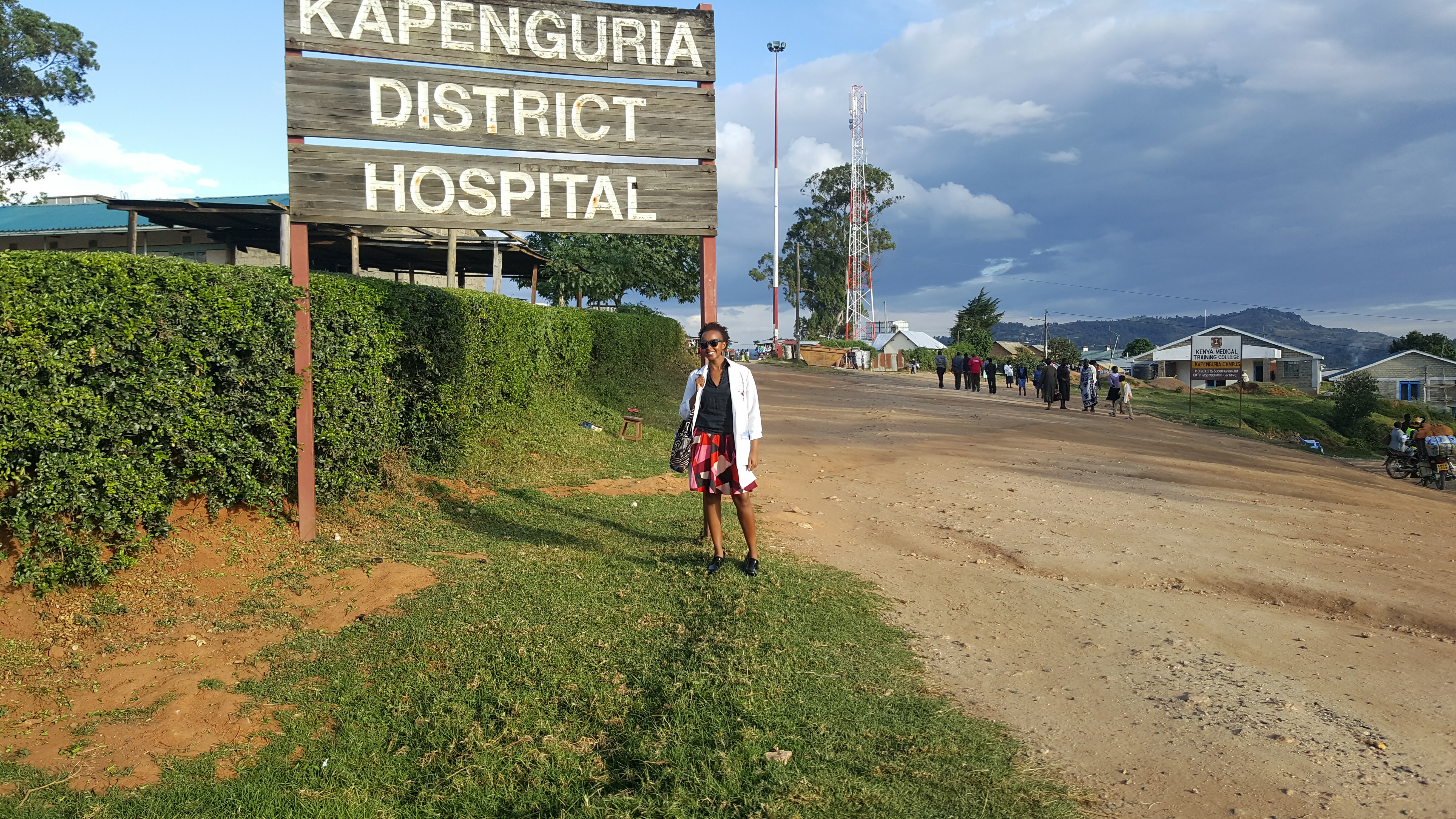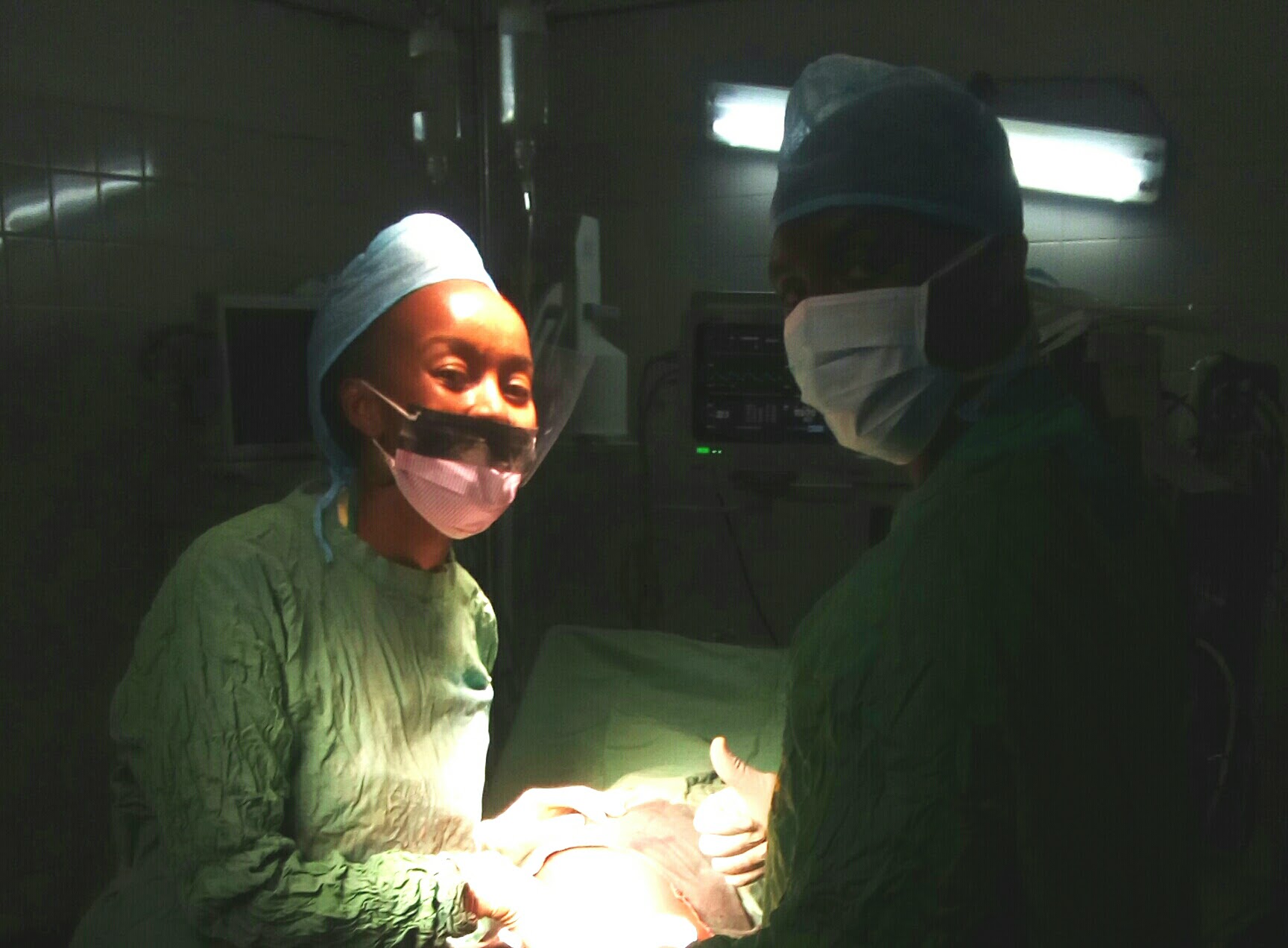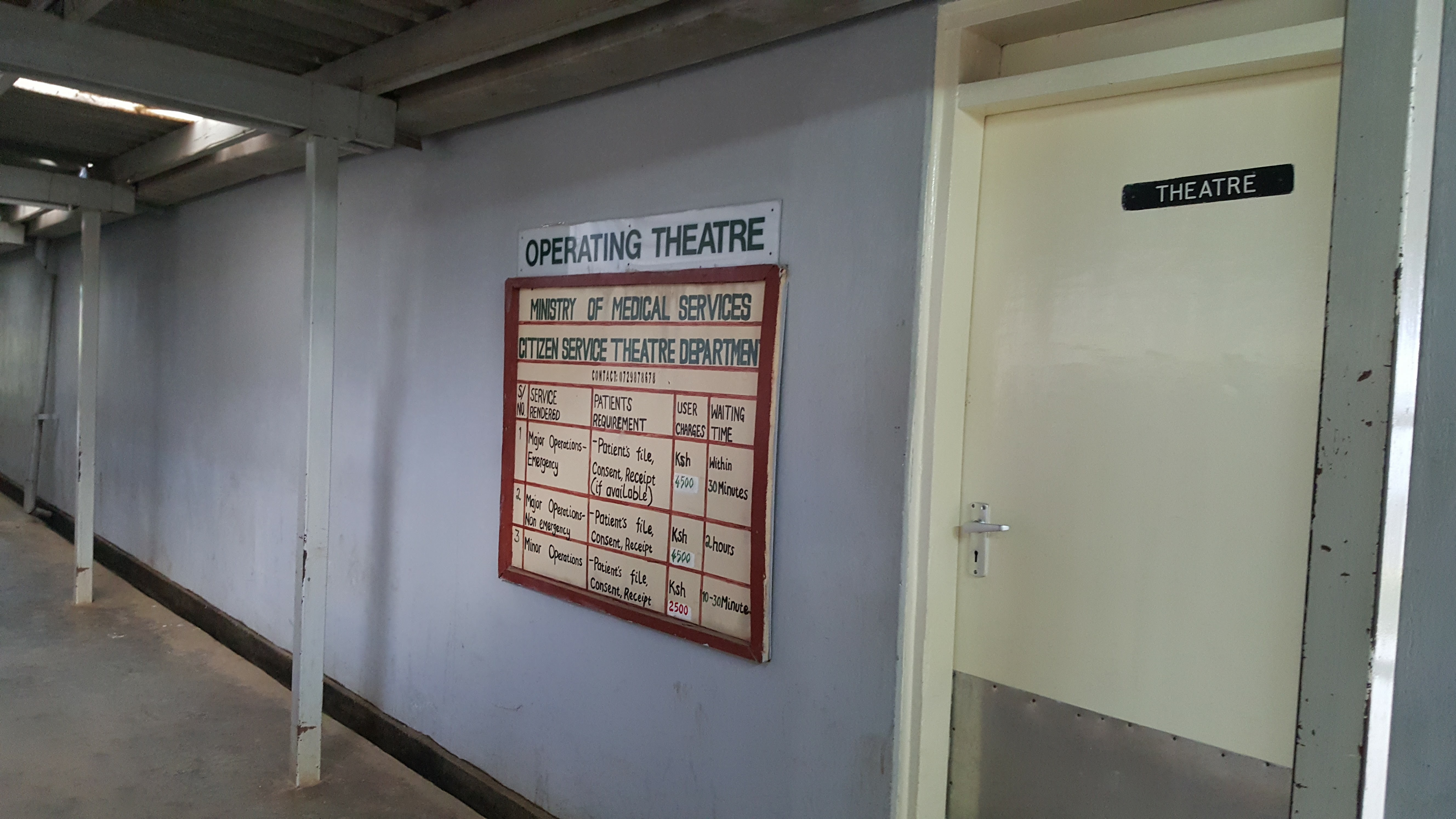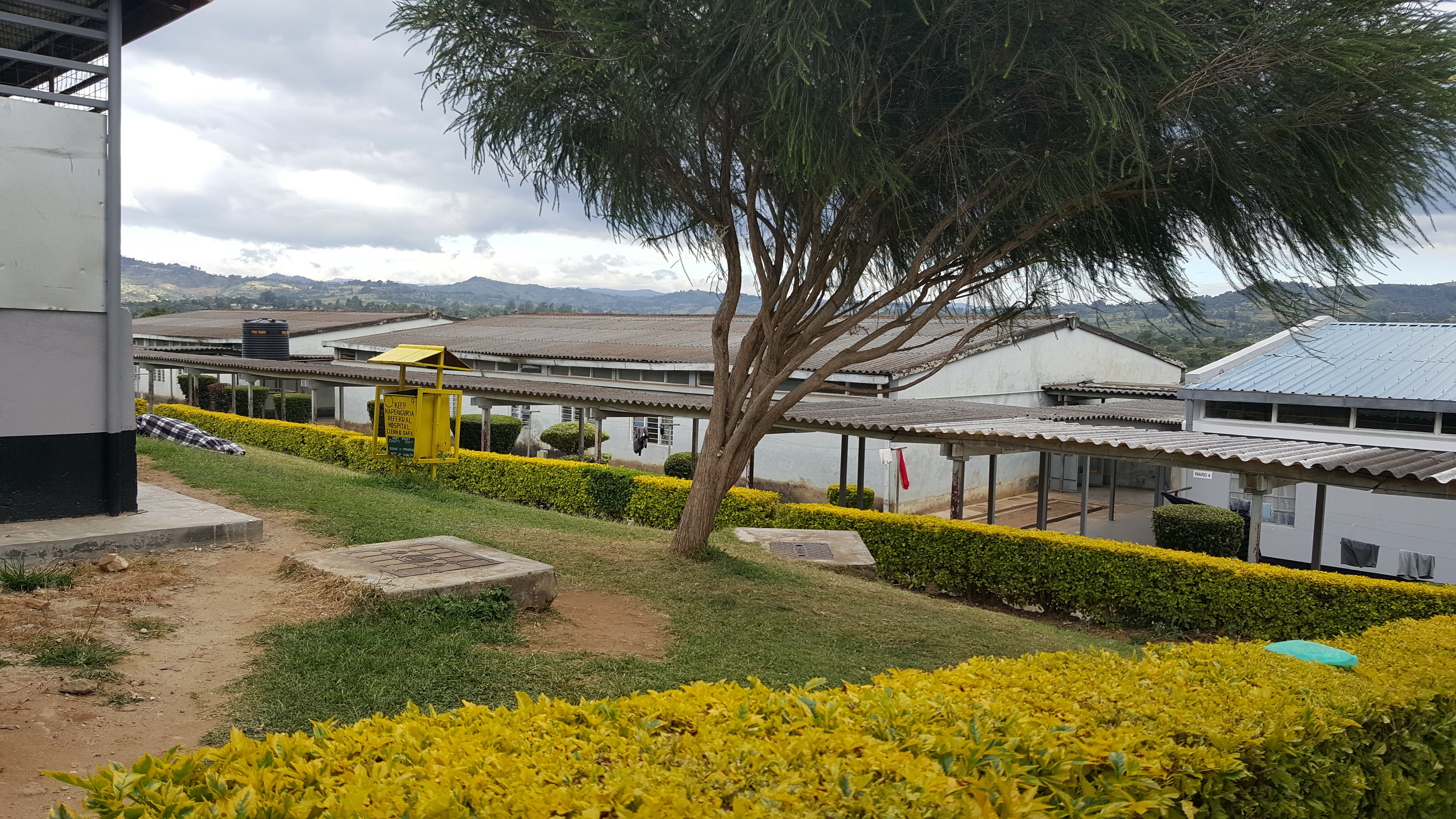Written by Christina Kinnevey, MD, Fellow at Kaiser Permanente Napa-Solano Community Medicine & Global Health…
Kapenguria District Hospital – Chemtai Mungo, MD
Written by Chemtai Mungo, MD, PGY-3 at Kaiser Permanente San Francisco Obstetrics & Gynecology Program while on Global Health rotation at the Kapenguria District Hospital in Kapenguria, Kenya in December 2016.
I spent my 3rd year rotation at Kapenguria District Hospital (KDH), in Western Kenya. Kapenguria is a small town of approximately 300,000 people, located in West Pokot District, in Western Kenya. The District hospital in Kapenguria is a regional referral hospital serving this population, as well as the surrounding region. The West Pokot District of Western Kenya is a rural, marginalized area of Kenya, where the population faces a heavy burden of maternal and neonatal mortality due to lack of timely access to medical care, inadequate numbers of providers, as well as the burden of the HIV/AIDS. Maternal mortality and morbidity are exacerbated by the practice of female genital cutting, which women in

this region have historically experienced (and in some cases continue to experience), due to the rural nature of the area, historical low levels of education, as well as gender inequity.
Kapenguria district hospital is a special place to me not just because it is an underserved hospital in the country I was born, but because it is the hospital in which my mother had me, approximately 30 years ago. The village that my father grew up in is about a 30 minute walk from this hospital, and my pregnant mother likely made this walk many years ago to deliver me. Going back as an OBGYN resident, helping provide care to local women was a wonderful opportunity and privilege for me. These women were easily my relatives and extended family members.

As a practitioner of Global Health, I have had many clinical and research experiences in hospitals in low-and-middle income settings. I wrote about my second year elective at the national hospital in Kenya here.
Similar to my experience at Kenyatta National Hospital, I loved my time at KDH, as the hospital is known.
The labor ward at KDH, like many hospitals in Kenya and countries like it, is primarily ran by nurse midwives. They admit patients, triage, and do majority of the deliveries, including breech deliveries and dealing with postpartum hemorrhage and other complications of labor. A Medical Intern (who is doing his/her first year out of 7 years of medical school) and a Medical Officer who is one or more years out of Internship are also part of the medical care team for women. But these doctors are also responsible for overseeing patients in other wards of the hospital, so they are not around all the time, leaving majority of care provision to nurse Midwives. In the world of Global Health, one is conversant with such terms as “task shifting” which involves use of mid-level health practitioners (such as Nurse Midwives and Physician Assistants) to do certain tasks that routinely are done by doctors. In low-resource settings, task shifting is imperative as you only have two or three medical doctors at one time in the whole hospital, so you need them to take care of the most critical of cases.

This hospital is faced with similar challenges that other hospitals in low resource settings face – resource constraints (blood products, 2nd and 3rd generation antibiotics, infusion pumps), extremely high patient to provider volume resulting in subpar care, difficulty recruiting and retaining specialist doctors due to rural location, staff demotivation due to poor renumeration and unclear professional advancement paths etc.
Women in rural Kenya face tremendous burden in accessing care given the constraints of the weak health system that serves them. Some of my most difficult memories include a woman who delivered at home with a traditional birth attendant (still very common) who presented to a local health center after bleeding heavily due to a retained placenta. She was referred to KDH, a long journey on unpaved roads, very weak, only to find that the hospital’s blood bank had no blood. Another patient with twins, a high-risk pregnancy that in high income countries would be taken care of by specialist doctors, delivered one twin at a local health center (likely with a midwife with no additional support), only to have the second twin be “retained” (meaning they could not be delivered). The patient also undertook a long journey to KDH, with minimal pain medication, in second stage of labor, for a higher level of care.
There were also tremendous experiences of good outcomes against all odds. A high risk twin pregnancy that I participated in delivering via cesarean section, in a “bare bones” operating room, who also had received minimal care and made it to 35 weeks gestation, two gorgeous and well grown female infants. They did well and went home.
The highlights of my time at KDH include engaging with patients and helping them understand their care, as well as working alongside Kenyan health providers and understanding their perspective as practitioners in a stretched, and weak health system. Patients are incredibly appreciative of care they receive from their providers, and it was an honor for me to be part of these important moments of their lives. Being able to converse in Swahili with patients was an added bonus!

It was also incredibly satisfying engaging with local providers to understand their perspectives, challenges and motivations. In the pursuit of health equity, human resources for health is a crucial component. The Global Health community has a lot of work to do as far as understanding the needs of health care providers who work in these low resource settings, and how best we can support them, and keep them providing these crucial services. I was incredibly inspired by a young medical intern I worked with, Dr. Ramtai. Only 24 years old, he would be on call during the whole weekend covering the whole hospital, all the wards, with the support of a Medical Doctor who isn’t physically present. Dr. Ramtai would respond to the asthmatic child in the pediatrics ward in distress (with suboptimal oxygen and nebulizers), the accident victim who needs an emergent surgical debridement, or the emergencies in the labor ward. He and others like him are the unsung heroes of Global Health and the fight for health equity!
I am incredibly grateful to Kaiser Global Health for the support during this elective time. It was affirming of my goal to spend my career pursuing equity in women’s health through research, clinical care and advocacy.
References
https://afya360.co.ke/health-facility/kapenguria-district-hospital/3132
Human Resources for Health — http://www.nejm.org/doi/full/10.1056/NEJMsr1302176#t=article
Who Lives and Who Dies? The most important lessons from decades of global health care. Paul Farmer.Slate.com. http://www.slate.com/articles/health_and_science/medical_examiner/2015/03/global_public_health_development_goals_paul_farmer_on_who_lives_and_who.html
Hello Dr. Mungo. I am writing a memoir about working in Kapenguria in 1981. I came through Operation Crossroads Africa for the summer and worked in the hospital taking the daily census and in the maternity ward. I see many of the same problems in 1981 are still problems today. The picture of the hospital is so familiar. When I was there the generator hadn’t been hooked up because of some political business in Nairobi – someone didn’t get paid off. I am stunned to find this – just looking for additional info for my memoir. My time in Kapenguria changed my life as I know it is changing yours. All best, Barbara Clarke – Bellingham, WA – October 10, 2018